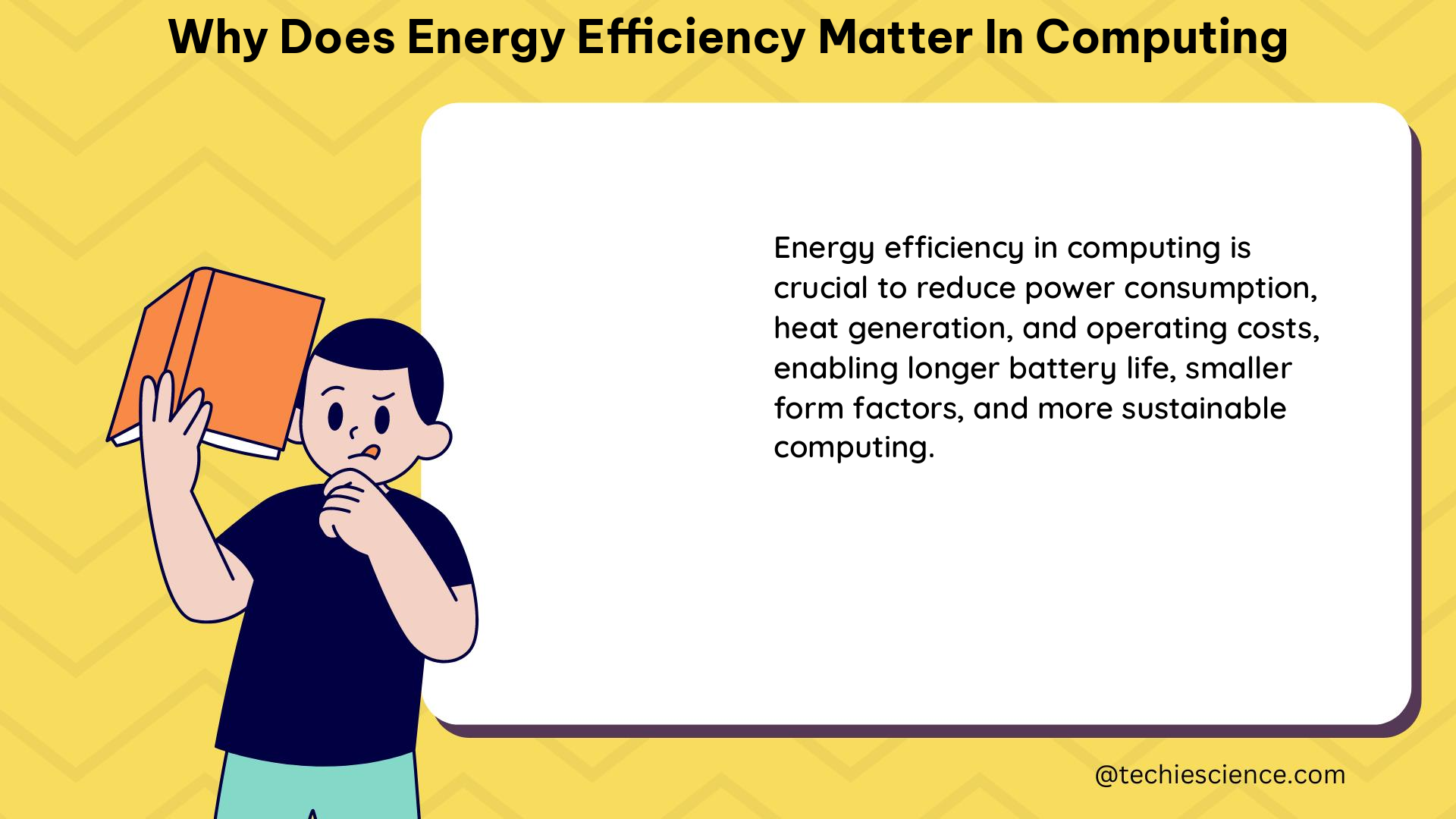Energy efficiency is a critical concern in the computing industry, as the global IT sector consumes approximately 3% of the world’s electricity, equivalent to the output of 30 large power stations. The importance of energy efficiency in computing cannot be overstated, as it directly impacts cost savings, reduces energy consumption, and minimizes the carbon footprint of computing operations.
Understanding Energy Efficiency in Computing
Energy efficiency in computing is the practice of using less energy to achieve the same or better computing performance, reducing energy waste, greenhouse gas emissions, and energy demand while cutting down on bills and overall costs. This can be achieved through various strategies, including:
- Improving Hardware Efficiency: Designing energy-efficient servers, processors, and other hardware components can reduce energy consumption by up to 30%.
- Optimizing Software Algorithms: Developing energy-efficient algorithms can reduce energy consumption by up to 90%.
- Enhancing Cooling Systems: Implementing energy-efficient cooling systems can reduce energy consumption by up to 40%.
- Utilizing Renewable Energy: The use of renewable energy sources can reduce the carbon footprint of data centers by up to 90%.
Measuring Energy Efficiency in Computing

To quantify the energy efficiency of computing systems, several metrics and measurements are used:
- Power Usage Effectiveness (PUE): PUE is a dimensionless ratio that measures the energy efficiency of a data center. A PUE of 1.0 indicates that all the energy consumed by the data center is used for computing, while a PUE of 2.0 means that an additional watt of IT power is required to cool and distribute power to the IT equipment for every watt of IT power it uses.
- Energy Proportionality: Energy proportionality is a measure of the relationship between the power consumed by a computer and the rate at which it performs useful operations. As hardware becomes more efficient, it can turn electricity into useful operations more effectively.
- Efficiency Formula: The efficiency of a system is typically measured as the ratio of useful output to total input, as expressed by the formula: Efficiency = Output ÷ Input, where Output represents the total amount of useful work completed without considering any waste or spoilage, and Input represents the total amount of energy consumed by the system.
Theoretical Limits of Energy Efficiency
Landauer’s principle, a fundamental theorem in physics, places an upper limit on the number of computations that can be performed per kilowatt-hour. This principle states that every logical operation in a computer must be accompanied by a corresponding amount of energy dissipation, which has implications for the ultimate limits of energy efficiency in computing.
Physics Examples and Numerical Problems
-
Physics Example: Consider a data center with a PUE of 1.5 and an application that consumes 10 kWh of energy. The actual consumption from the grid would be 15 kWh, with 5 kWh going towards the operational overhead of the data center and 10 kWh going to the servers running the application. Improving the energy efficiency of the application could reduce the energy consumption, leading to cost savings and a smaller carbon footprint.
-
Physics Numerical Problem: If a data center has a PUE of 2.0 and an application consumes 20 kWh of energy, what is the actual consumption from the grid? The solution is that the actual consumption from the grid would be 40 kWh, with 20 kWh going towards the IT power of the application and an additional 20 kWh required to cool and distribute power to the IT equipment.
Data Points and Values
- The global IT industry consumes about 3% of the world’s electricity, equivalent to the output of 30 large power stations.
- A single Google search uses as much energy as illuminating a 60-watt light bulb for 17 seconds.
- A typical data center can consume as much electricity as a small town.
- Energy-efficient servers can reduce energy consumption by up to 30%.
- Energy-efficient algorithms can reduce energy consumption by up to 90%.
- The carbon footprint of a typical data center is equivalent to that of a small city.
- Energy-efficient cooling systems can reduce energy consumption by up to 40%.
- The use of renewable energy sources can reduce the carbon footprint of data centers by up to 90%.
Measurements and Units
- Energy consumption is measured in watts (W), kilowatts (kW), or megawatts (MW).
- Power usage effectiveness (PUE) is a dimensionless ratio that measures data center energy efficiency.
- Energy proportionality is a measure of the relationship between power consumed by a computer and the rate at which it performs useful operations.
- The efficiency of a system is typically measured as the ratio of useful output to total input.
Conclusion
Energy efficiency is a crucial concern in the computing industry, as it directly impacts cost savings, reduces energy consumption, and minimizes the carbon footprint of computing operations. By understanding the various strategies, metrics, and theoretical limits of energy efficiency, computing professionals can work towards developing more energy-efficient hardware, software, and data center infrastructure, ultimately contributing to a more sustainable and environmentally-friendly computing ecosystem.
Reference:
– Energy Efficiency in Computing
– Efficiency Definition
– Energy-Efficient Computing

The lambdageeks.com Core SME Team is a group of experienced subject matter experts from diverse scientific and technical fields including Physics, Chemistry, Technology,Electronics & Electrical Engineering, Automotive, Mechanical Engineering. Our team collaborates to create high-quality, well-researched articles on a wide range of science and technology topics for the lambdageeks.com website.
All Our Senior SME are having more than 7 Years of experience in the respective fields . They are either Working Industry Professionals or assocaited With different Universities. Refer Our Authors Page to get to know About our Core SMEs.